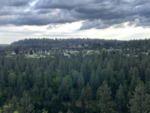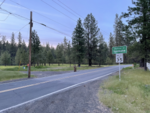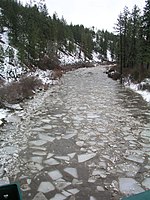Esmeralda Open
The Esmeralda Open was a golf tournament on the PGA Tour that was played in 1945 and 1947 in Spokane, Washington. It was held at Indian Canyon Golf Course, a municipal facility designed in 1930 by Chandler Egan on the west end of the city, and opened in 1935. The Esmeralda Open was organized by the Spokane Athletic Round Table, a fraternal organization, headed by Joe Albi. The ART's emblem was a laughing horse named Esmeralda, which inspired the title of the charity tournament. The Round Table would later be instrumental in the construction of the city's Esmeralda Golf Course, opened in 1956 in northeast Spokane. It also was the driving force behind Spokane Memorial Stadium, named for Albi in 1962. The Esmeralda Open was held annually for over a decade, but most editions featured local and regional golfers, and was not part of the PGA Tour. The first in 1943 was a 54-hole event played at Downriver, and the 1949 tournament included Bing Crosby, who was raised in Spokane. It was not held in 1944, when the 1944 PGA Championship was played at Manito Golf and Country Club in south Spokane. In 1946, Spokane and the ART hosted the first U.S. Women's Open at the Spokane Country Club, north of the city. An attempt was made to have the PGA Tour return in 1954, but was unsuccessful.
Excerpt from the Wikipedia article Esmeralda Open (License: CC BY-SA 3.0, Authors).Esmeralda Open
Trail 121,
Geographical coordinates (GPS) Address Nearby Places Show on map
Geographical coordinates (GPS)
| Latitude | Longitude |
|---|---|
| N 47.647 ° | E -117.474 ° |
Address
Indian Canyon Golf Course
Trail 121
99224
Washington, United States
Open on Google Maps










